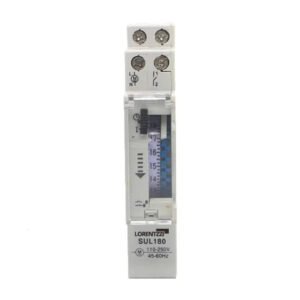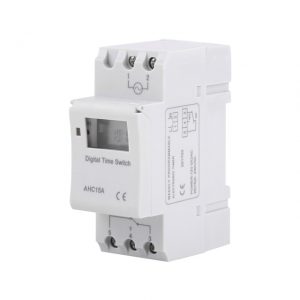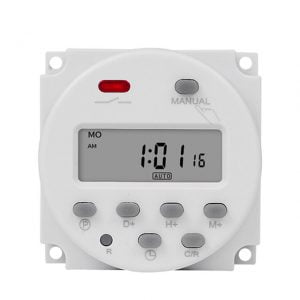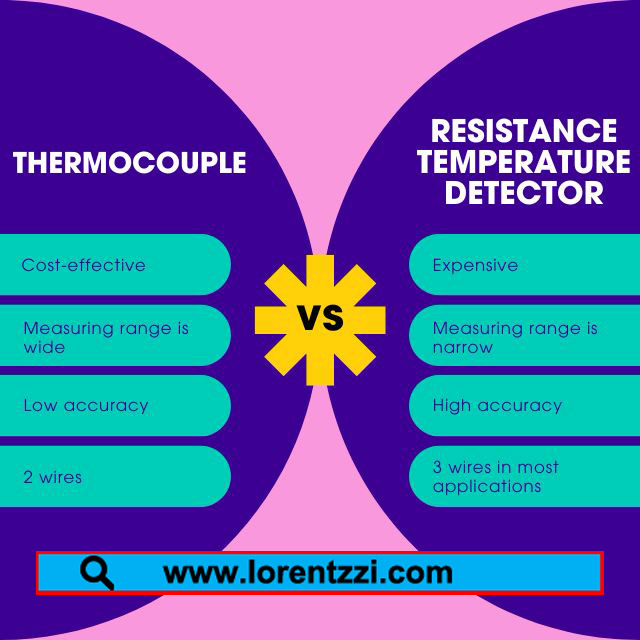It’s no secret that our planet is getting warmer and warmer. The cause of climate warming lies in the extensive use of fossil fuels. It is urgent to reduce the use of fossil energy now. In addition to reducing fossil fuel use, what we can do right now is saving energy. The easiest thing we can do right now is saving energy by reducing our household electricity usage, such as using energy-saving lamps, turning off lights on time, setting energy-saving mode, using timers, etc. Geysers are an often overlooked but important factor in high electricity bills. In this article, we’ll look at how simply adding a geyser timer to your home can make a huge difference in controlling your electricity usage, not only lowering your energy bills but also having a positive impact on the environment.
I. Understanding Electricity Consumption:

A home’s energy needs are a multifaceted issue, and geysers play a pivotal role in overall energy consumption. Geysers, also known as water heaters, are often used to heat water and can account for a large portion of your monthly electricity bill, according to a research, cooling and heating energy use accounts for approximately 47% of overall electricity use – Source: https://greenlogic.com/blog/the-top-5-biggest-users-of-electricity-in-your-home. Therefore, reducing the energy consumption of geysers is becoming increasingly important. Not only to save our own electricity, but also to reduce carbon emissions and make our own efforts to prevent our planet from warming. Now the question comes, but what should we do? Let’s continue!
II. What is a Geyser Timer?
Geyser timer is a vital component in a heating usage management system. But what exactly is it? A geyser timer is a device designed to regulate the timing of a geyser’s operation, allowing the geyser to turn on and off according to your schedule. These timers come in many types, from basic manual analog (mechanical) models to more advanced digital programmable models. Regardless of the type, their main function is to control when the geyser heats the water, ensuring that it only operates when necessary.
III. Benefits of Using a Geyser Timer:
There are many benefits to deciding to install a geyser timer in your home. Below I will mainly explain it from two aspects:
- One of the most significant advantages is the reduction in energy consumption, leading to noticeable savings on your electricity bills. Research shows that geysers that are set to heat their water once a day for two hours will cut more than 60% off their geyser expenses(source: https://www.drainmen.co.za/geyser-timers-facts-to-consider-in-2022/#:~:text=Statistics%20show%20that%20geysers%20that,preferred%20choice%20among%20bigger%20families.).
- By limiting the geyser’s operation to specific times, you not only cut down on unnecessary energy use but also extend the lifespan of the geyser and related components. This translates to fewer maintenance costs and a reduced environmental impact.
Stay tuned for the next installment as we delve into the installation process, programming geyser timers for maximum efficiency, and other tips for maintaining energy-efficient geysers. Ready to start saving energy and money? Let’s dive in!
IV. How to Install a Geyser Timer:
Now that you understand the benefits of a geyser timer, let’s walk through the installation process. Installing a geyser timer is a relatively straightforward task that doesn’t require advanced technical skills. Here’s a step-by-step guide to help you get started:
Step 1: Gather the Necessary Tools and Materials
Before you begin, make sure you have the tools and materials you need on hand. These usually include screwdrivers, pliers, wire strippers and the geyser timer itself or DIN rail if required. Check the manufacturer’s instructions for any specific tools recommended for your specific timer model.
Step 2: Turn Off Power
Safety first! Before you start the installation process, turn off the power supply to the geyser. This can usually be done at the circuit breaker. Double-check to ensure there is no electricity flowing to the geyser before proceeding.
Step 3: Access the Geyser's Control Panel
Locate the control panel on your geyser. This is where you’ll be connecting the geyser timer. The control panel is typically found on the front of the geyser, and you may need to remove a cover to access it.
Step 4: Connect the Geyser Timer
Follow the manufacturer’s instructions to connect the geyser timer to the control panel. This often involves attaching wires to specific terminals. Use the appropriate connectors and ensure a secure connection.
Step 5: Mount the Geyser Timer
Mount the geyser timer in a convenient location. This could be on the wall near the geyser or on the geyser itself, depending on the model. Make sure it’s easily accessible for programming.
Step 6: Power On and Test
Turn the power back on and test the geyser timer to ensure it’s functioning correctly. Follow the instructions to set the initial timer settings.
V. How to Set a Geyser Timer:
Just knowing how to install a geyser timer is not enough, how to program it is the most important. Properly setting up your geyser can help you feel comfortable while also saving energy. In this section we’ll cover how to properly set up a geyser timer. The ideal settings can vary depending on your household’s hot water usage patterns. Here are some general tips:
Morning and Evening Usage:
Program the geyser to operate during peak hot water demand times, typically in the morning(7 am to 9 am) and evening(6 pm to 9pm). This ensures you have hot water when you need it most.
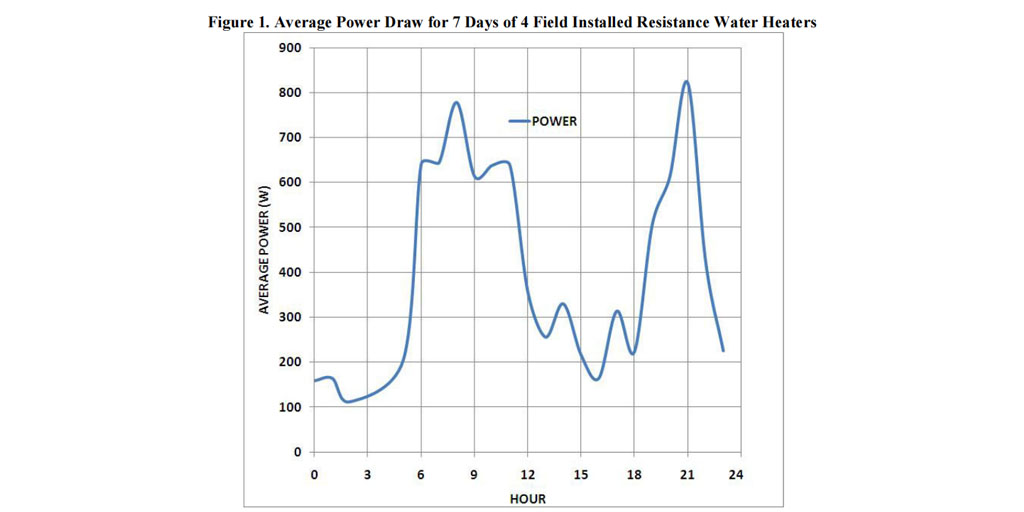
Avoid Off-Peak Hours:
Set the geyser timer to off during times when hot water demand is low, such as mid-day or late at night (outside the 7-9am and 6-9pm hours). This prevents unnecessary energy consumption.
Experiment and Adjust:
Monitor your hot water usage patterns and adjust the geyser timer settings accordingly. Over time, you’ll find the optimal schedule that balances comfort and energy efficiency.
VI. Additional Tips for Energy-Efficient Geyser Usage:
Beyond the benefits of a geyser timer, there are additional steps you can take to enhance the energy efficiency of your geyser and further reduce electricity consumption:
1. Geyser Insulation:
Consider adding a geyser blanket or insulation jacket. This helps to retain heat, reducing the need for the geyser to constantly reheat the water. This is particularly effective in colder climates where the ambient temperature can impact the geyser’s performance.
2. Regular Maintenance:
Perform regular maintenance checks on your geyser. Ensure that it is free from sediment buildup, as this can affect its efficiency. Flushing the tank periodically can help maintain optimal performance.
3. Educate Household Members:
Encourage responsible hot water usage among household members. Simple habits like taking shorter showers and avoiding unnecessary hot water usage can contribute significantly to energy savings.
VII. Case Studies or Success Stories:
Real-life examples can provide valuable insights into the tangible benefits of using a geyser timer. Let’s explore a couple of case studies highlighting individuals or households that have successfully reduced their electricity bills through the adoption of geyser timers.
Case Study 1: The Smith Family
The Smith family installed a programmable geyser timer and adjusted the settings to align with their daily routine. Within a few months, they noticed a significant drop in their electricity bills without compromising on hot water availability. The timer allowed them to customize their geyser’s operating schedule, ensuring it only ran when needed.
Case Study 2: Eco-Conscious Living
A group of environmentally conscious individuals decided to embrace energy-efficient practices, including the installation of geyser timers. By combining timers with geyser insulation and regular maintenance, they achieved a remarkable reduction in their collective carbon footprint and energy expenses.
VIII. Conclusion:
In conclusion, incorporating a geyser timer into your home is a practical and effective way to save electricity, reduce utility bills, and contribute to environmental conservation. By understanding the benefits, properly installing the timer, and optimizing its settings, you can strike a balance between comfort and energy efficiency.
As one of the Chinese geyser timer manufacturers, Lorentzzi® can produce various types of geyser timers. Our geyser timers include mechanical timers such as SUL181D, TB388, digital timers such as CN101A, THC30A, THC15A, etc.



